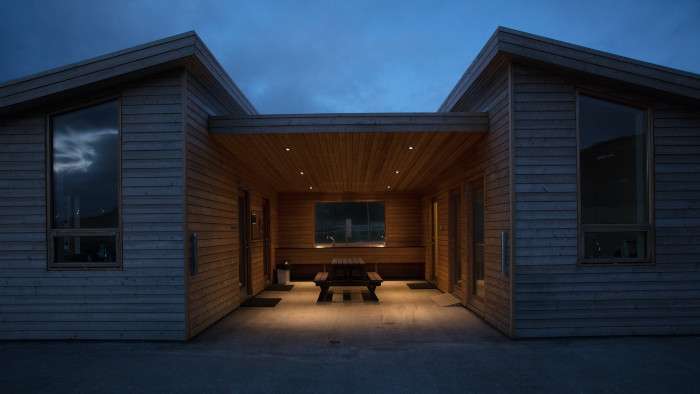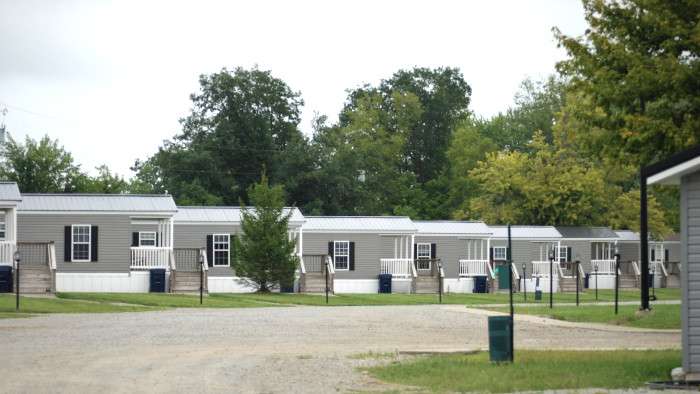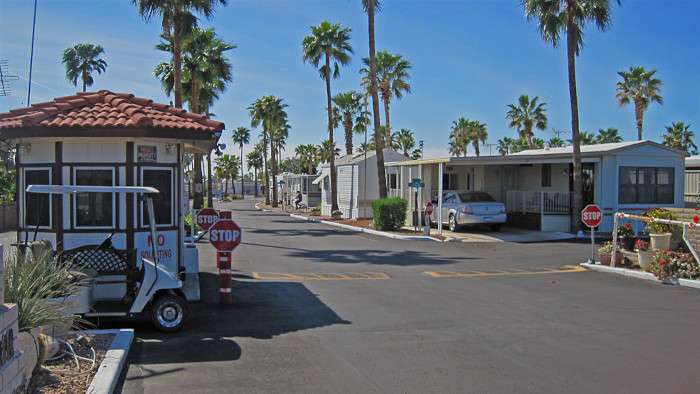Manufactured, mobile, and modular homes are eligible for a reverse mortgage as long as they meet certain requirements. We’ll explain what those requirements are and how to get a reverse mortgage on a manufactured home in 2024.
If you own a manufactured, modular, or mobile home, you’ve probably discovered that it can be difficult to get a home loan. Lending for manufactured homes is a specialized market that many lenders don’t participate in.
The lenders that do participate often have stringent underwriting requirements that can make qualifying difficult.
Can you get a reverse mortgage on a mobile home or manufactured home? Absolutely! As long as it meets certain standards, you can get a reverse mortgage on a manufactured home all day long.
Before we cover what those standards are, let’s first cover the basics about how a reverse mortgage works. There is a lot of misinformation out there about reverse mortgages. Let’s lay some groundwork and clear up some misconceptions, then we’ll cover how to get a reverse mortgage on a manufactured home.
Table of Contents
How a Reverse Mortgage Works
A reverse mortgage is a unique mortgage product that offers homeowners 62 and older access to home equity without giving up home ownership or taking on a mortgage payment.
The most popular reverse mortgage in the United States is the home equity conversion mortgage, or HECM (commonly pronounced heck-um by industry professionals).
The HECM was signed into law by President Reagan as part of the Housing and Community Development Act of 1987. Today, it’s regulated and insured by the Federal Housing Administration (FHA) and the Department of Housing and Urban Development (HUD).
No repayment is required as long as at least one borrower (or non-borrowing spouse) lives in the home and pays the property charges.
You remain the owner of your home and you’re free to leave it to your heirs. Your heirs can keep the home by paying off or refinancing the reverse mortgage balance. If your heirs don’t want the home, they can sell it, repay the reverse mortgage, and keep the remaining equity.
Your heirs can also let the lender sell it if they don’t want to keep the home or mess with selling it.
The HECM is a non-recourse loan, which means the most that will have to be repaid is the value of your home. FHA covers the shortage if your home isn’t worth enough to pay off the entire balance.
The HECM is flexible and customizable. You can take the proceeds as a lump sum, line of credit, term/tenure income, or some combination of these options.
Homeowners commonly use the proceeds to eliminate existing mortgage or other debt payments, fund home improvements and repairs, pay for medical bills, supplement income, and supplement retirement assets. You can use the money for whatever you like.
How much you qualify for depends on your age, home value, current interest rates, and the HECM program you select. It’s a different number for everybody.

How to Get a Reverse Mortgage on a Manufactured Home
Now that we’ve covered some reverse mortgage basics, let’s cover how to get a reverse mortgage on a manufactured home.
The first thing we need to do is define some terms. There is often a disconnect between applicants and lenders about what is considered “manufactured”, “mobile”, and “modular”.
Many homeowners classify their home as a modular home, but to lenders it’s considered a mobile home. These definitions may seem nitpicky, but they’re important because they determine what lending standards apply.
It’s important that your lender understands clearly what you have if you want to get a reverse mortgage on a manufactured home. As we’ll see, a reverse mortgage for mobile homes is a different animal than a reverse mortgage for modular homes.
Let’s cover how lenders define the relevant types of construction. Understanding these terms will help you communicate more clearly about your home if you decide to apply for a reverse mortgage.
- Stick-built – The vast majority of housing in America is stick-built. Stick-built homes are constructed entirely on-site. The lumber is shipped to the construction site and the walls, floors, roof, etc., are all cut, framed, assembled, and finished on site.
- Manufactured – Any type of housing built entirely or mostly in a factory. Mobile homes and modular homes are types of manufactured housing.
- Modular – This is a type of manufactured housing for which components are built in a factory and assembled on-site. For example, walls, floors, roofs, etc., are built as separate components in a factory, shipped to the construction site in stacks on flatbed trailers, then assembled into the final product. Once a modular home is complete, it’s often indistinguishable from traditional “stick-built” construction. Modular (also called “pre-fab”) homes commonly have high-end finishes and a contemporary style of construction.
- Mobile – This type of construction is far more common than modular. The vast majority of manufactured homes in America are mobile homes. Mobile homes are built in one, two, or three large fully-assembled sections in a factory, then shipped to the installation site and connected together into the final product. Mobile homes are commonly classified as “single-wide”, “double-wide”, or “triple-wide”.
If you have a modular or mobile home, you have a manufactured home. If your home is a single-, double-, or triple-wide, it’s a mobile manufactured home.
If the terms single-, double-, or triple-wide don’t apply to your manufactured home, you may have a modular or pre-fab home.
This may seem like splitting hairs, but a reverse mortgage for mobile homes has different requirements than a reverse mortgage for modular homes. It’s important for your lender to understand up front what you have so that the application process goes smoothly.

Reverse Mortgage for Modular Homes
The lending requirements for modular and stick-built homes are basically the same. There are no special lending guidelines that apply if you have a modular versus a stick-built home. Your modular home just needs to be in reasonably good condition and not unusually unique.
If you have a very unique modular home (which can be the case sometimes), it may be difficult for a real estate appraiser to find comparable sales and estimate the value of your home. If the appraiser can’t estimate the value of your home, your lender won’t be able to approve your reverse mortgage.
Reverse Mortgage for Mobile Homes
A reverse mortgage for mobile homes has additional requirements that don’t apply to modular or stick-built homes. Again, the HECM is an FHA-insured loan. FHA falls under HUD, so HUD manufactured housing guidelines apply. You can get a reverse mortgage on a mobile home as long as it meets HUD requirements. Your home:
- Must have been built after June 15, 1976. This is when mobile home construction was standardized via the Manufactured Home Construction and Safety Standards.
- Must be installed in it’s original location. Mobile homes moved from their original installation location are not eligible. It’s no problem if the home was moved from the dealer’s lot to the current location, it just can’t have been moved again.
- Must be on a permanent foundation. Lenders require a foundation inspection before approving a reverse mortgage for mobile homes.
- Must be classified and taxed as real estate by your county. If you’re paying lot rent, your home likely is not eligible. It’s not possible to get a reverse mortgage on a mobile home sitting on rented land.
- Must have permanent skirting around the home. The skirting needs to be intact and in reasonably good condition. If you have gaps in the skirting, your lender will require them to be repaired.
- Must have HUD tags or data plates. This helps your lender confirm when the home was built.
- Cannot be a single-wide. To get a reverse mortgage on a mobile home, it must be at least a double-wide.
- Must have the axles removed. If your home is on a permanent foundation, it’s a good bet the axles were removed at installation.
Any additions to your mobile home must meet HUD and county requirements.
Other lending requirements may apply, but these are the most important ones. If your mobile home is in reasonably good condition and meets the above criteria, it will likely qualify.

Where to Find a Lender
If you have a modular manufactured home, almost any lender will be happy to work with you. Again, the “modular” part is just how it’s constructed. Once a modular home is complete, it’s not fundamentally different than a stick-built home – as long as it’s not extremely unique.
There are usually no special lending requirements for modular homes.
If you have a mobile home, on the other hand, you’ve probably already discovered that it’s not always easy to get a mortgage. Not all lenders offer a reverse mortgage for mobile homes. Those that do often have stricter requirements than the standard HUD requirements.
If you have a mobile home, you’ll probably want to work with a large national reverse mortgage lender. The bigger lenders are more likely to a reverse mortgage for mobile homes without overly restrictive requirements.
As of this writing, the biggest reverse mortgage lenders by loan volume are Mutual of Omaha, AAG, and Longbridge. You may want to start with one of them.
When you call, let them know right away that you want a reverse mortgage on a mobile home. They’ll probably ask when your home was built, how large it is, if it’s on a permanent foundation, etc. You’ll want to cover this ground up front so you can determine right away if your home will meet their lending guidelines. If it doesn’t, you can move on to another lender before wasting a lot of time with somebody you can’t work with.
Some Final Thoughts
So, can I get a reverse mortgage on a manufactured home? Absolutely! Can I get a reverse mortgage on a mobile home? Absolutely – as long as your home meets HUD requirements.
As we’ve covered, the lending guidelines are virtually the same for modular and stick-built homes. If you have a modular home, you shouldn’t have any issues with it as long as it’s in good condition and not particularly unique.
A reverse mortgage for mobile homes is a slightly different animal. You may need to work a little harder to find a lender, but the big national lenders I mentioned are a good place to start. It’s a good bet they will be happy to offer a reverse mortgage on a mobile home as long as it meets the basic guidelines we’ve covered.
If you would like to estimate how much you can get from a reverse mortgage, check out our reverse mortgage calculators.
Main image courtesy of Brett VA. The only modification from the original was resizing.
